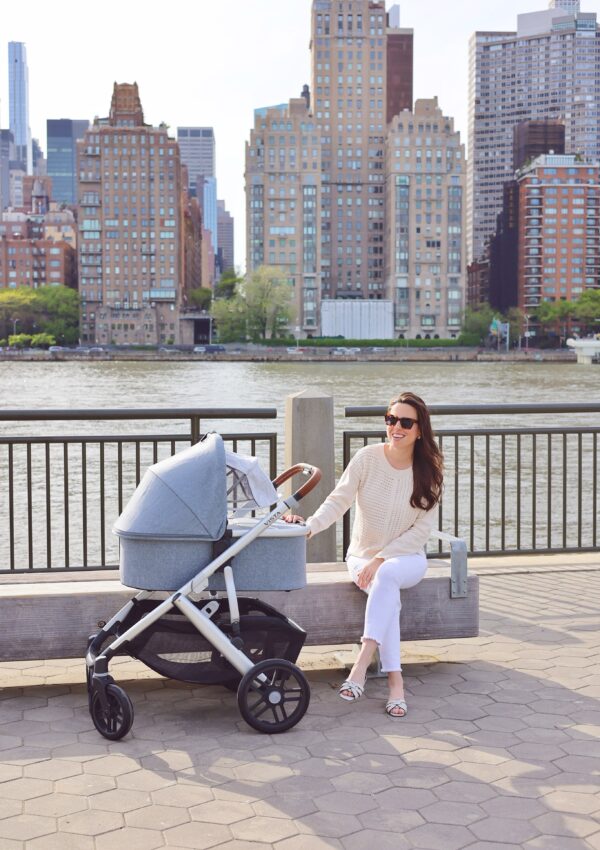
Pregnancy After Surgery
Almost 3 years, and an abdominal myomectomy later… I’m pregnant!
The probability of a woman becoming pregnant after fibroid surgery (myomectomy) can range anywhere from 39 to 56% based on their circumstances.
I had an emergency abdominal myomectomy in November 2022. But before I get into that, let me go back to January 2022, when I heard the word ‘fibroids’ for the first time…
We were in Florida for the holiday season, and I did a routine GYN exam. During that appointment, I mentioned that we had been trying to conceive for two years without luck and that as of the past year, I was bleeding heavier than usual during my periods.
A hormonal panel was ordered, and because everything looked normal, a transvaginal ultrasound was performed. It was during that exam that I learned that I had fibroids.
By September 2022, our concern with infertility increased, and we met with a doctor in New York City. During our initial consultation, we discussed possible treatments, and blood was sent to the lab. The following morning, at 7:00 AM, we received a phone call telling us to rush to the hospital for blood transfusions – I was apparently at risk of an immediate stroke – and death.
We arrived, and within an hour I was receiving my first blood transfusion of the day. Blood work from the previous day showed that I had a severely low hemoglobin level of 5.3 g/dL (the normal Hb level for females is 12 to 16), and that is why the doctor ordered me to go to the hospital so quickly. After another ultrasound, an obstetrician at the hospital stated that I needed an urgent myomectomy (before my next menstrual cycle).
After extensive research and a pelvic MRI (for the number, size, and location of the fibroids), I learned that one of the country’s top fibroid experts was in New York City, so I sent him a copy of my MRI results. Lucky for me, after he analyzed my MRI, he gave me an appointment.
Not all obstetricians have the skills required to perform a myomectomy; many opt to perform a hysterectomy because it is easier. But a hysterectomy (a surgery to remove the uterus) was not the best option for me because we wanted the opportunity to have children. This is why I searched everywhere for an expert in the field, a surgeon with an extraordinary ability to perform the type of surgery I urgently needed.
I was not a candidate for a laparoscopic myomectomy, so an abdominal myomectomy was performed in November 2022.
My recovery was painful and slow. For the first 4 months, I was unable to sit for periods longer than 30 minutes; otherwise, I would feel a sharp pain around my lower abdomen.
It was recommended that we wait six months before trying to conceive again, and we conceived naturally in July 2023.
My advice to you is that if you suspect that you may have fibroids, see the list of symptoms that I included below, consult with a doctor, ask about iron supplements, and please don’t wait to be seen!
Send this article to anyone who needs to learn about fibroids.
Please DM me (@AnaFlorentyna) if you want to chat. 🥰
FIBROIDS: FACTS, SYMPTOMS, AND TREATMENT:
If you are unfamiliar with fibroids, here is a lot of information that I think is good to know.
Fibroids – Important Facts
- Fibroids are tumors made of smooth muscle cells and fibrous connective tissue that develop in the uterus during the years you’re usually able to get pregnant.
- Fibroids can cause complications like excessive bleeding & reproductive problems.
- Between 20-70% of women will develop fibroids during their reproductive years.
- Fibroids are defined according to where they occur in the uterus: intramural, submucosal, and subserosal.
- The normal Hb level for females is 12 to 16 g/dl. To ensure adequate tissue oxygenation, a sufficient hemoglobin level must be maintained.
- When the hemoglobin level is low, the patient has anemia.
- Anemia is a condition that occurs when your blood has a lower-than-normal amount of red blood cells or hemoglobin.
- The threshold for transfusion of RBC should be a Hb level of 7 g/dL in adults.
- Women without symptoms do not need treatment, but they should be evaluated regularly by their doctors.
Fibroids Symptoms
- Bleeding between periods.
- Heavy or prolonged periods.
- Abdominal discomfort/fullness.
- Bladder symptoms (frequent urination).
- Pelvic pain.
- Lower back pain.
Emergency Fibroids Symptoms
In some cases, women with fibroids need emergency treatment. So my advice for you is to seek emergency care if you have sharp, sudden pain in the abdomen that is unrelieved with pain medication, or severe vaginal bleeding with signs of anemia such as lightheadedness, extreme fatigue, and weakness.
Fibroids Treatment – Myomectomy
- A myomectomy is a surgical procedure to remove uterine fibroids.
- The surgeon’s goal during a myomectomy is to remove fibroids and reconstruct the uterus. Unlike a hysterectomy, which removes your entire uterus, a myomectomy removes only the fibroids and leaves your uterus.
- There are several types of myomectomies. The procedure that is right for you will depend on the location, number, and size of uterine fibroids to be removed.
- An abdominal, or open, myomectomy requires the longest recovery and carries some additional risk compared with the other approaches to myomectomy, but it is recommended in specific cases when the benefits outweigh the risks. (This is what I had done).
- For an abdominal myomectomy, you can expect general anesthesia, two days of hospitalization, and a horizontal or midline incision. The procedure takes 2-3 hours.
- A laparoscopic myomectomy is a type of myomectomy surgery that uses a small, lighted telescope to remove uterine fibroids from your uterus. This is a minimally invasive procedure where a surgeon makes four tiny incisions in your abdomen and then uses a laparoscope (with a light and video camera), to operate through the incisions. Your surgeon views the surgery on a video monitor. (I was not a candidate for this because I had more than five fibroids).
MORE INFORMATION ABOUT FIBROIDS:
Can fibroids be prevented?
Fibroids cannot be prevented.
What causes fibroids?
It is not known what causes fibroids, but studies suggest genetics and prolonged exposure to estrogen may increase your risk of developing fibroids.
What to do if you have fibroids?
- Be aware of your symptoms.
- Consult with your ob-gyn, and ask about iron supplements.
- TEST: If you need to change your tampon or pad after less than 2 hours or you pass clots the size of a quarter or larger, that is heavy bleeding and you need to see a doctor immediately.
- If you have no symptoms, but suspect you may have fibroids, consult with an ob-gyn immediately.
Foods that may help with shrinking fibroids
There is no evidence that a dedicated diet will shrink fibroids or prevent them from forming; however, eating healthy may help reduce fibroid growth.
- Vegetables: broccoli, cauliflower, and cabbage.
- Green tea: the antioxidant polyphenol is thought to counteract the effects of estrogen.
- Foods rich in Vitamin E: almonds and hazelnuts.
- Omega-3 fatty acids.
Fibroids and Menopause
Once a woman reaches menopause (when the menstrual cycle stops), most fibroids will begin to shrink due to a drop in estrogen levels.
A final note!
Those are just the things I wish I’d known, especially the list of symptoms that I mentioned above, and the importance of taking iron supplements for anemia.
I wanted to finish today’s post with the story of a first-time mom that I met recently. She had conceived without being aware that she had fibroids in her uterus. During pregnancy, her fibroids grew parallel to her baby, causing her to require an emergency C-section with an extensive additional procedure for the removal of the fibroids (both surgeries took place the same day). One of her fibroids was massive, and the blood loss she experienced while three surgeons tried to remove them after delivering her baby put her own life at serious risk. So please note that it is also possible to have fibroids without symptoms.







